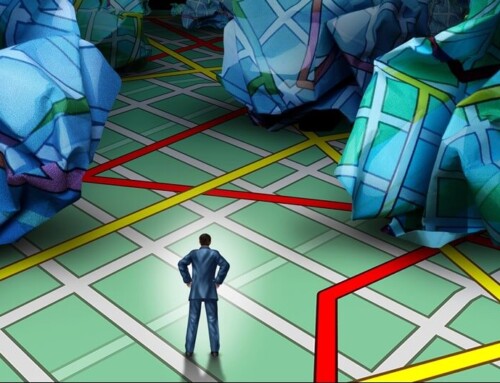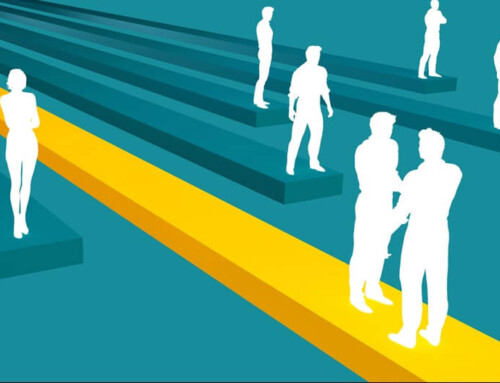Many of the offsite meetings that organizations hold are focused on team building and helping employees work together and communicate well. However, some of these meetings can fall short because they fail to engage attendees.
Fortunately, by thinking outside the box, you can plan offsite meetings with unexpected elements that will delight attendees while achieving meeting objectives. In fact, by incorporating elements that are interesting to employees, you can ramp up engagement levels and leave attendees with a more positive image of your company.
Here are 10 unique ideas that your offsite meeting attendees will love.
1- PHOTO BOOTH WITH PROPS
A perennial favorite, the photo booth is an oldie-but-goodie that has had a resurgence in the last few years. And, unlike trends that come and go, it has retained its place in the event space. It is not only a fun activity, but the photo booth also gives participants a souvenir in the form of picture rolls, or they can be downloaded in electronic form. Digital versions often are secured on a website with a username and password, or can be sent directly to someone’s mobile device by scanning a QR code.
Playful props and digital technology have given the modern version of the photo booth major upgrades. By giving meeting attendees (appropriate) props to use in their pictures, you encourage them to let loose and feel more comfortable with their teammates. As you can guess, this is an excellent way to help employees forge stronger bonds with each other.
Here are a few ways that you can use photo booths in your next meeting:
- Feature your brand along with your attendees.
- Take a photo of your top performers at the summit of Mount Kilimanjaro or Mount Everest with a virtual backdrop.
- Use a 360-degree photo booth for a creative way to showcase a new product and gain attendee engagement.
- Solve a real-world company problem and then take photos with creative mystery game props. For example, secret files, notepads, magnifying glass, letters, Sherlock Holmes style hat, evidence bags, caution tape, etc.
- Set up a photo booth during a welcome kick-off and include props relevant to the theme – game day, beach party, fancy cocktail party, etc.
2- KARAOKE
Rent – or borrow – a modestly sized karaoke machine and you will have an excited group of employees. Whether showing off their impressive vocal chops or warbling hilariously off-key, people love karaoke. Make sure the machine comes with an accompanying guide to the lyrics for all song selections.
Offer small prizes in fun categories like the following:
- Best rock ‘n roll head bangin’ style
- Most swoon-worthy duet
- Best honky tonk cowboy twang
If singing isn’t for your group, that’s alright too! Try alternatives such as “Name that Tune” or “Guess the Lyrics.”
PRO TIP: Part of the fun is when everyone is familiar with the songs. For optimal enjoyment gather a list of songs together and take a poll. Select songs that most people know to include in your mix.
3- ESCAPE ROOM
If your group is small, taking them to a local escape room – or hiring a company to create an escape room at your meeting venue – is an excellent way to encourage employees to work together as a team.
The most fun escape room themes tend to be those from distinctive eras in time. For example, one popular theme is the 1940s detective agency. Clues can be downright corny and written in the tone of the old-fashioned detective movie genre. In fact, this is encouraged!
4- BRAINTEASER COMPETITION
Brainteasers are great for strengthening teams, and encourage communication, creativity and critical thinking among attendees. They challenge the mind and require creative thinking to solve them.
Some examples of brainteasers that are ideal for offsite corporate meetings that can be used to engage attendees and promote teamwork are:
- Seven Degrees of Separation – If you’re familiar with the parlor game, Six Degrees from Kevin Bacon, you already understand the basic concept of this game. If not, teams or individuals connect seemingly unconnected objects, places, people, or ideas together in seven steps. Here are two examples:
| EXAMPLE #1 | EXAMPLE #2 | |
| Goal | Connect Yourself to Nicolas Cage | Connect a rock to a glass of wine |
| Degree 1 | Bob (he’s your co-worker) |
Paper (as in rock, paper…) |
| Degree 2 | Elmer (he’s Bob’s uncle) |
Scissors (as in the game of Roshambo) |
| Degree 3 | Fido (Elmer’s dog) |
Cut (what scissors do) |
| Degree 4 | Abraham Lincoln (had a dog named Fido) |
Vegetables (what might be cut) |
| Degree 5 | Wrestling (Honest Abe is listed in the wrestling hall of fame) |
Stir Fry (what can be done with cut vegetables) |
| Degree 6 | Dwayne ‘The Rock’ Johnson (retired pro wrestler, now actor) |
Restaurant (where you might eat stir fry) |
| Degree 7 | Nicolas Cage (he starred in the movie, “The Rock”) |
A Glass of Wine (what is served at a restaurant) |
| Proof | You and Nicolas Cage are separated by seven degrees. | A rock and a glass of wine are separated by seven degrees. |
- Spot the Difference – Everyone is given a period of time to study something, such as items on a table for two minutes. Then the table is covered. Everyone is asked to leave the room. Items on the table are then adjusted, removed, or changed entirely. Teams are asked to work together to recall what was on the original table.
- Moral Dilemmas – Faced with moral dilemmas, teams discuss philosophies, morals, ethics, and how these relate to decision-making. Some examples include:
- The Trolley Dilemma
- The Runaway Trolley Dilemma
- The Footbridge Dilemma
- The Baby Dilemma
- The Sophie’s Choice Dilemma
- The Prisoner’s Dilemma
- The Organ Transplant Dilemma
- Conflict of Interest Challenge
- Whistleblower Quest
- Equal Treatment Dilemmas
- Transparency vs. Confidentiality Challenge
- Environmental Responsibility Puzzle
- Product Safety vs. Profit Game
- Employee Privacy Enigma
5- SCAVENGER HUNT
Who does not love scavenger hunts? They evoke memories of an egg hunt in spring from childhood. They can be done in any meeting venue, large or small, inside or outside. Amp up the fun factor by using work-related items in the scavenger hunt. Get as creative as possible with hiding places. You will need to time the activity to add the element of suspense. In general, 10 to 15 minutes is a good length of time for the average scavenger hunt.
6- COOKING CLASS
You can find professional chefs at all expertise levels virtually anywhere in the world. This makes holding a cooking class for a smaller group an entirely feasible and engaging option. It is best for smaller groups because the fewer people cooking, the more attention each one will get from the chef.
Picking an easy dish is recommended, as not everyone is experienced in the culinary arts. Set up stations for each person (or pair, if you have a slightly larger group) and let everyone enjoy their culinary creations as the grand finale.
7- BLAST FROM THE PAST GAME NIGHT
Game night takes on another dimension when you break out vintage games. Make sure you use popular games from the 1980s, 1990s, and early 2000s to include all age groups/generations. Try to pick games that do not take a long time to play.
Break people into teams instead of letting them choose their own to encourage participants to branch out beyond their usual work group. Prepare the list of teams in advance to ensure you are dividing them up according to coworkers they do not interact with often.
PRO TIP: Be sensitive to attendees who have restrictions or barriers when it comes to contact. For example, the classic game of Twister may pose challenges for those with healing sports injuries or diseases such as arthritis. Additionally, there may be personal reasons why close contact may be considered uncomfortable.
8- GEOCACHING
Establish a geocaching account and you will be ready to hold a different type of scavenger hunt. Geocaching uses a navigational device to find objects that people around the world have hidden. Using the geocaching account, participants can see that the hidden items – called geocaches – are hidden nearby.
Teams work together to solve the mystery and find the prizes. Geocaching is a great activity to foster teamwork and communication, and it comes with a physical reward in the form of the geocaches.
PRO TIP: When making plans to geocache, be sure you understand the rules of etiquette. For example, as a general rule of thumb when you take something from a geocache, you should leave something in its place.
9- MAGIC SHOW
Hiring a professional magician to dazzle attendees with his bag of tricks makes an offsite meeting “magical” – pun intended! In all seriousness, magic shows are as much fun for adults as they are for kids when they are executed by an expert magician. You can go for a comedic magician who focuses on silly tricks that get a laugh or choose a magician who pulls off incredible feats that make the audience gasp with awe.
10- CREATE YOUR OWN INVENTION
Think about this activity as crafting on adrenaline. Break attendees up into teams (again, assign the teams instead of letting them pick their own) and give each team 10-15 simple items. Using these items, each team has an hour to create its own invention. They must not only build the invention, but each team must also come up with a pitch for it and explain how their invention will help those who use it. All inventions must be original; they cannot already exist.
Have each team present their invention, its purpose, and benefits, and record each presentation to use as part of a meeting highlights reel later.
UNEXPECTED ACTIVITIES FOR UNFORGETTABLE MEETINGS
With a little bit of ingenuity and a hearty dose of creativity, you can elevate the average offsite meeting to something truly unforgettable. Best of all, attendees will learn to work together well and forge stronger bonds while having fun.
Do you need to ramp up engagement levels and teamwork at your next corporate meeting or event? If so, contact Gavel International to see how working with a meeting planning company can benefit your organization.
- Discover the Exceptional Food and Beverage Scene of Venice, Italy - April 21, 2025
- 5 Ways to Build a Productive and Participatory Meeting Culture - March 31, 2025
- Build a Culture of Curiosity and Solutions-Driven Change - March 17, 2025






